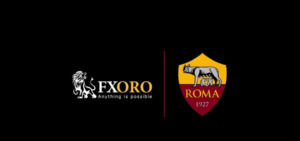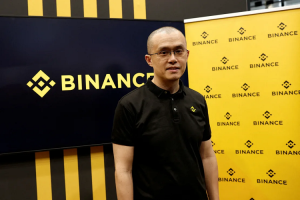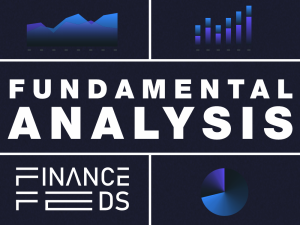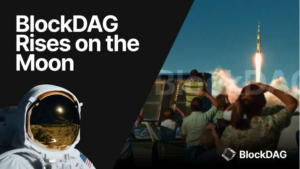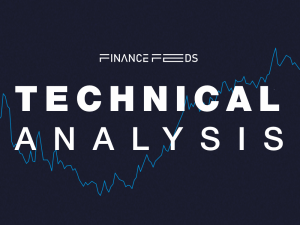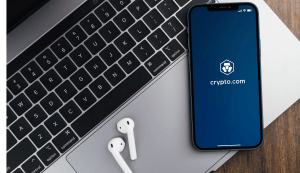Average retail FX account size vs average cost of acquisition: How sustainable is the status quo?
It is impossible to compare the development cycle that occurs within the online trading industry with that of any other global business, whether that may be legacy manufacturing businesses or modern, internet based post-Millenial phenomena. In years gone by, other revolutionary, highly advanced and multi-faceted businesses have not only been a long time in the […]

It is impossible to compare the development cycle that occurs within the online trading industry with that of any other global business, whether that may be legacy manufacturing businesses or modern, internet based post-Millenial phenomena.
In years gone by, other revolutionary, highly advanced and multi-faceted businesses have not only been a long time in the making before showing the world a new direction, but are also, even today, slow to evolve compared to the electronic trading business.
Indeed, in 1886, when Karl Benz wheeled the very first road-going vehicle out of his humble workshop, it had been the result of a lifetime of development and the fuel that it used on its very first 106 km journey from Mannheim to Pforzheim with Bertha Benz at the wheel is not that dissimilar to that used in internal combustion engines of today, some 130 years later.
Yes, mass production has been perfected, reliability is at such a high level that no motorists don’t concern themselves with the probability of being stranded en route, and the electronic features available are continually improving, but the basic components are still based on the original design 130 years ago – internal combustion engine, four wheels and foot and hand controls.
The development cycle of new models, even for today’s global manufacturing giants is down to two years, whereas in the 1990s it was seven years.
Two or three years, however, in the electronic trading industry where the vehicle is client deposits and the product is not physical, can equate to more than the 130 years in an industry in which a physical product is central, thus 130 years in the automotive industry equates to 4 years in our industry.
Conclusion: Manufacturers of physical products can afford to put more resources into development over a longer period of time than any electronic trading firm can.
How much do clients deposit over their entire lifetime?
A great deal of investment of R&D resources and marketing budget is plowed into bringing onboard new customers, an increasingly difficult task in light of two major factors that have emerged over the last three to four years, the first being the level of understanding among retail clients which has led to fiscal cautiousness and at the same time demand for sophisticated trading environment, and the second being the massive competition which comprises several hundred retail FX companies offering similar services.
Research by FinanceFeeds showed that there are 1,231 active retail brokerages using the MetaTrader 4 platform globally at the moment.
The similarity of platform means ease of transfer of clients from one brokerage to another, however this also means that clients can leave easily, negating the cost of acquisition.
In the United States, in 2011, the average retail FX account size was $3,800, however the cost of acquiring a client at that time was approximately $500, including all components required to acquire clients – remuneration of sales team, marketing tools, digital media buying, and advertisement campaigns as well as the cost of paying commission or a revenue share to partners and running advertising campaigns.
Interestingly, according to research by Citigroup, the average retail FX account size across the world’s 4 million retail FX traders in 2015 was $6,600.
Since 2011, many retail FX companies have made vast inroads into mainland China, the largest operators there being FXCM, FXDD, Saxo Bank, GAIN Capital, FxPro, EXNESS and until last year, IronFX according to extensive research conducted by FinanceFeeds from within large introducing brokers across Tier 2 development towns in China.
Account size has actually risen – but there are hidden costs!
This may have increased the average account size, but the cost of entering and maintaining potentially fruitful emerging markets such as mainland China is very high, largely because the high-touch approach is required, necessitating many visits to China by executives to maintian relationships, and a constant rapport-building exercise between partners departments of brokerages and introducers who now understand that their contribution is so instrumental to the revenues of a retail broker that they are demanding very high remuneration packages.
Gone are the days in which introducing brokers and affiliates were small one-man businesses. Nowadays, many introducing brokers, especially in China, are pretty much brokerages in their own right with 100 staff, their operations emulating that of a retail broker, the only difference being that the dealing is being done by a brokerage with which they place business.
Whilst a model like this removes the need for a large direct sales team for many brokers who can concentrate on execution and maintaining margin balances in an omnibus account from which the introducing broker can then handle every aspect of client facing activity, an important metric that is often omitted from the ‘cost of acquisition’ estimates is that it costs the introducing broker greatly to operate, and rebates and revenue share from a brokerage is what pays for this.
Therefore, it is vital to consider not just the traditional (if you can call pre-2011 traditional!) aspects when counting the cost of acquisition and retention, and adding those components up. Instead, it is worth considering the single payment made per month to each introducing broker and the likelihood is that this figure is not dissimilar to the multiple components that make up onboarding direct clients.
Differentiation is expensive
One means of maintaining clients without having to continue to be concerned about whether they may leave for another MetaTrader brokerage is to engage a specific audience by developing a proprietary platform, however this has now become the subject of a dichotomy between companies depending on which side of the Atlantic they reside.
In Britain, the spread betting and CFD firms of London’s ‘Square Mile’ are mostly long-established and very highly capitalized by comparison to retail FX firms with MetaTrader 4 licenses or white label agreements, therefore are able to put a vast sum into the development and support of proprietary platforms.
A discussion last month between myself and Grant Foley, CFO of CMC Markets in London revealed that the company’s highly sophisticated next generation trading platform cost $100 million to develop.
Add to that the support costs (my estimate approximately $150,000 per month) and then the overall operating cost of the firm, and look at the demand for low spreads which is in the forefront of all retail traders’ minds, and this becomes the preserve of only the very well heeled indeed.
Dukascopy Bank in Switzerland, is a relatively small and boutique technology-led company, however its annual profit is approximately $1.5 million, which is marginal indeed when considering the level of sophistication that the company’s trading systems exude, and the operational resources which are required to develop and support it, as well as the cost of being registered as a Swiss bank.
IG Group is in a similar position to its London based peers, however so vast is IG Group’s domestic client base and so effective is the company at onboarding direct retail customers without cross border concerns or IB remuneration, that it is the largest broker by revenue in the UK.
In America, the astute technology providers that operate in the futures, equities and options sector are now engineering platforms for exchange-traded assets, aimed at retail customers. The cost of this is much lower, and the business model highly sustainable as a centralized exchange is handling the order flow, reducing the cost of operation.
Indeed, membership and clearing fees are a concern but the average futures and equities trader deposits exponentially higher amounts, and the overall operating costs are less because a broker simply needs to capitalize a trading platform and payment gateway, and satisfy regulatory capital requirements, which for an IB registered with the NFA is $45,000.
Most brokers which are attached to exchanges are eligible for IB status as they are simply referring orders to exchanges to be executed outside the remit of the brokerage itself, even if the broker is a market maker on an exchange.
FXCM, Interactive Brokers and GAIN Capital are still purely operating on an OTC basis but their retail client bases are vast, globally.
FXCM’s current direction is to concentrate on direct sales, rather than introducing brokers, retaining an IB network only in China. This keeps the costs down.
Even so, the status quo is now being challenged remarkably as the cost of acquisition remains approximately $1,000 to $1,200 per retail client, and lifetime value among MetaTrader 4 white label brokers is less than 6 months.
Even Plus500, which operates a very lean business with no sales team and has a very effective digital marketing strategy with low media buying costs in order to attract small-deposit customers on a low-touch basis, is experiencing customer acquisition costs of approximately $850 which is the lowest figure in the retail FX industry, yet still far in excess of that in other electronic retail businesses such as gaming.
In a similar vein to the US banking sector, in which 37 banks have become 4 in just 20 years due to consolidation, there are two ways forward for retail FX in terms of increasing revenues, the first being consolidation in order to generate economies of scale, and the other is complete diversification into the realms of new modus operandi, which, as a forward thinking, highly advanced industry with some very avantgarde leaders, will be a very interesting dynamic to relish.
Photograph: A replica of the very first automobile. Copyright Marcin Cieślak




